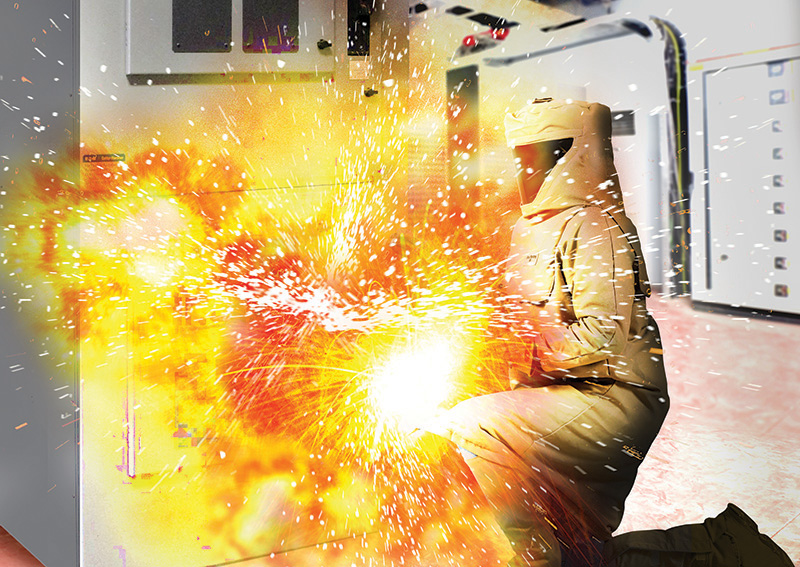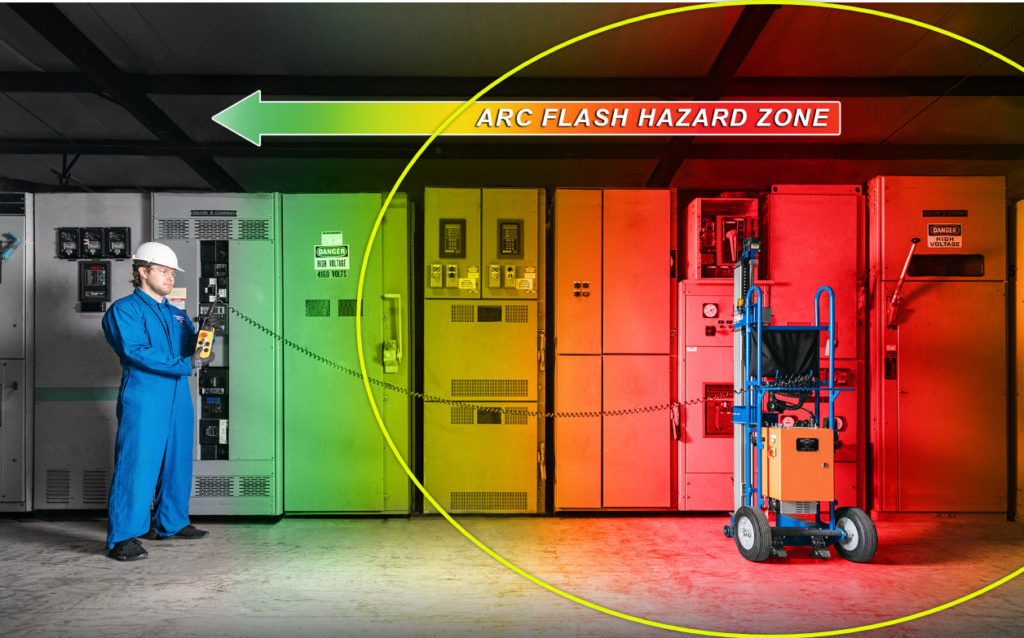Accurate arc-flash calculations are imperative but having remote racking and switching equipment provides constant protection for your most critical asset: your people.
Protecting workers and equipment from the dangers of arc flash is a primary concern for everyone in the electrical industry. An arc flash is an electrical explosion caused by a short circuit that can result in the destruction of electrical equipment and serious injury or death to nearby workers. Poorly maintained equipment is a common cause of this extremely dangerous situation so following NETA maintenance and testing standards is crucial to ensure power system safety.
Recent updates to IEEE Standard 1584, IEEE Guide for Performing Arc-Flash Hazard Calculations, have started a debate on how arc-flash energy is calculated and how companies should take that into account for their arc-flash studies and safety policies.
This article will look at the calculation changes and their impact on the way companies reduce arc-flash risk but focuses on one thing that hasn’t changed: distance is safety. It is part of a series of articles from Group CBS electrical companies that explains how remote racking and remote switching solutions, electrical testing, maintenance, and other shop and field services can reduce arc-flash danger to personnel and equipment.
Keeping Up With Standards
When it was first published in 2002, IEEE Standard 1584, IEEE Guide for Performing Arc-Flash Hazard Calculations, complemented the 1995 edition of NFPA 70E, Standard for Electrical Safety Requirements for Employee Workplaces, which introduced the concept of arc-flash hazard for the first time. Prior to that, arc flash and the injuries that it could inflict were not recognized as a separate classification.
The IEEE 1584’s calculations and recommendations were developed based on data from only about 300 laboratory tests. Over the 15 years that followed, research and testing continued, leading to the revision of IEEE 1584 published in 2018.
The second edition is based on a much more robust data set derived from more than 1,700 arc-flash tests, resulting in changes to arc-flash hazard calculations. The new calculation methods create more accurate formulas, and with greater accuracy comes increased complexity.
Changes in the 2018 edition worth noting include:
- Provides calculations for the full range of voltage from 208 V to 15,000 V
- Removes the 125 kVA transformer exception
- Identifies additional electrode configurations (e.g., VCBB, HOA, HCB)
- Takes enclosure size (and sometimes depth) into consideration
- Eliminates the 85% rule and system ground variable
- Establishes a minimum distance of 12 inches for calculating incident energy (IE)
The Safest Option Is Distance
A lack of maintenance or a faulty component can lead to an arc flash when combined with enough available energy. The arc flash can generate an electric arc with a temperature of 35,000°F, and if that doesn’t kill you, the arc blast could if you’re standing too close, even if you’re wearing arc flash PPE equipment rated to handle arc-flash energy. Not only that, but a failed overcurrent protection device (OCPD) or a slow breaker can result in higher incident energies than your technician’s PPE is design to protect against.
The best option is to work on deenergized equipment, but that’s not always possible. Some modern switchgear cubicles allow technicians to actuate an OCPD or other device while it remains inside the metal enclosure, but that wouldn’t offer protection from arc-blast pressure waves that can cause severe damage to anyone or anything nearby. The only way you can be sure that your equipment is in good working order and you’ve done all you can to protect your employees and your bottom line is to perform testing, opening and closing operations, and extraction/racking operations from well outside the arc flash boundary.
Remote racking and switching systems eliminate rather than reduce electrical arc-related dangers to qualified workers while providing preventive maintenance data on the force required to rack a circuit breaker, which could help avoid future catastrophes. These portable solutions allow technicians to stand up to 500 feet away from the switchgear, well outside the arc-flash and arc-blast danger boundaries, which are defined as the distance at which incident energy drops below 1.2 cal/cm2. The devices include a power supply, use magnetic latching tools so no modification to existing equipment is required, and often have wireless operation options.
Conclusion
Accurate arc-flash calculations and a current arc-flash study are imperative to communicate the arc flash hazard to qualified workers and to avoid unsafe conditions and/or an unscheduled outage. Having remote racking and switching equipment provides constant protection for your most critical asset: your people. Group CBS can also boost your confidence in the safety and reliability of your facility with arc-flash studies, coordination studies, short circuit studies, and other power system studies for new facilities or expansions. To learn more about our products and services, give us a call at 940-215-1977 or contact us.
Read the whole series:


